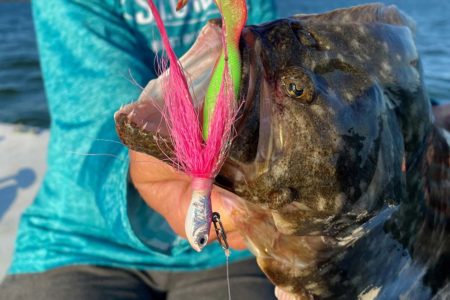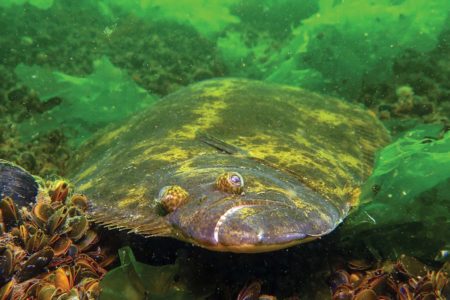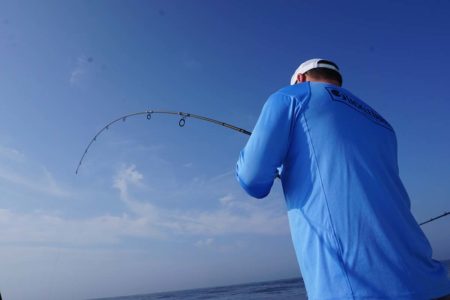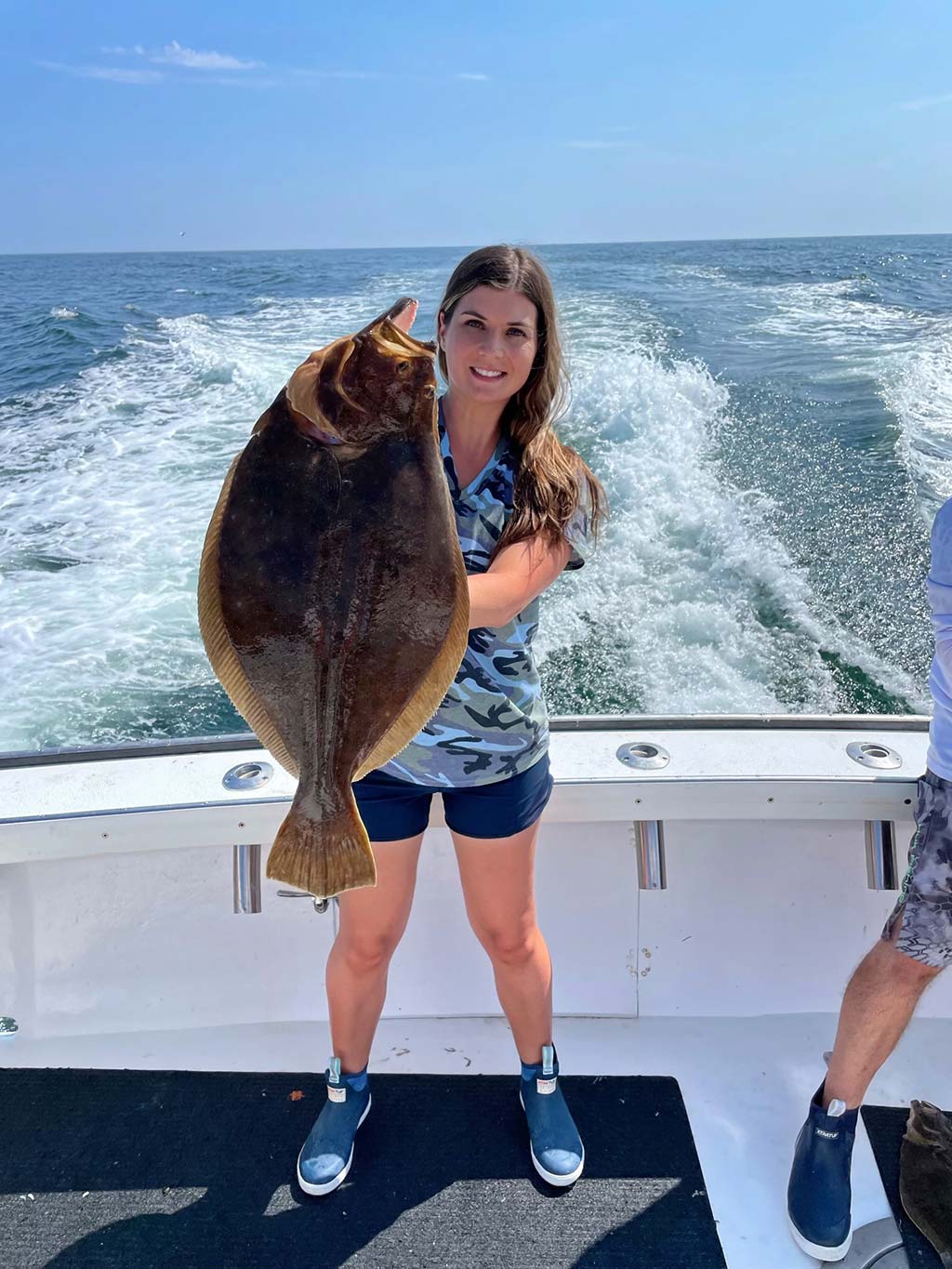
To Montauk and beyond for the season’s last (and biggest) fluke.
Back in the 1970s, when I was growing up, I couldn’t wait for each edition of The Fisherman Magazine to be delivered, so that I could read it cover to cover. I recall like it was yesterday, of all the photos of big doormat fluke hanging from the rails of the Montauk party boats during the fall run. Boats such as the Marlin, the Viking Fleet and the original Lazy Bones, which is still owned and operated by the Vegessis, the same family that started the business way back then. How I wished to be part of the fun in those days.
Fast forward to today, and those big fall fluke are again abundant in those same waters and anglers still have a great shot at catching a dream doormat if they apply the proper approach.
THE MIGRATION BEGINS
The autumnal equinox leads the fall season from the warm waters of summer to the chilly seas of fall, beginning the migration of big ocean fluke that settle in the deep waters around Montauk which are joined by the fish leaving Long Island Sound at the same time. The flatties slowly work their way offshore and eventually settle in the warm waters of the Gulf Stream. In the meantime, as long we don’t get slammed by a powerful hurricane, the ocean fluking off of Montauk during September offers the best shot at a true doormat that we see all season.
The Weather Is Paramount
September can be one of the nicest months of the year to be on the water. Speedy boats and the simplicity of navigational electronics has made day trips possible for anglers who run from ports along Long Island Sound and as far away as Point Judith to put a few mats in the box. Some local sharpies rent boat slips at one of the marinas each fall just to hunt for monster flatties in September.
Although fall weather can be calm and mild, it can also be treacherous when storms barrel up the coast. Even the remnants of serious storms often come with large southeast swells and hazardous conditions make for critical concern for small boat anglers making the run across to Montauk. Keep a close eye on the marine forecast, and plan your trips accordingly; if the weather is too much, consider reserving a spot on a party boat and allow a professional captain to make the decision on whether or not it’s safe to sail.
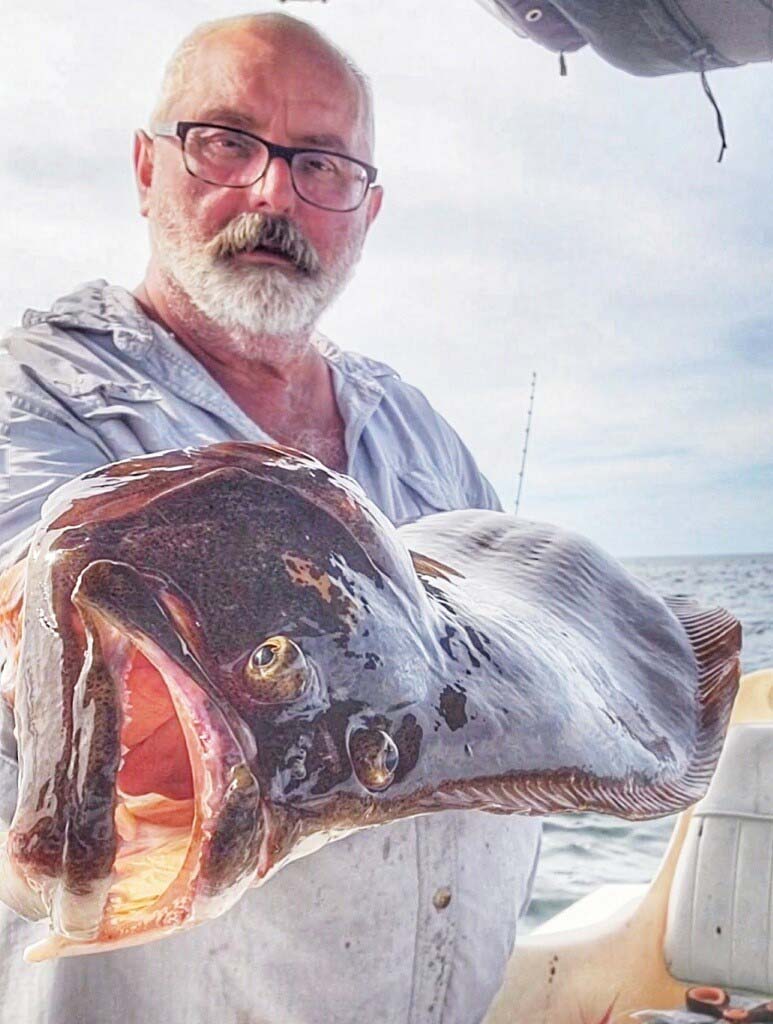
Finding Your Ground
If you are looking for areas to fish that have proved tried and true over time includes the Frisbee Ground (N41.00.86/W71.52.34) which is an area of rocky terrain with water depths ranging from 60 to 75 feet. The name derives from the high area that rises to 55 feet at the center of this location. Both the inner and outer Frisbees are jumbo fluke and sea bass magnets. Your best bet is to fish the area dotted with lobster trap markers along the east end of the grounds.
A little further south is the rocky floor of the Cartwright Grounds (N 40.58.580 W 71.47.03944) located 6 miles south of Montauk Point. The Cartwright Grounds is a 7-mile radius of rocky bottom resting in 80 to 100 feet of water. This area is strongly relied upon among the Montauk party and charter fleet during the summer fluke season for the quantity and quality of fish.
Fluke fishing around areas of obstruction such as the Frisbee and Cartwright Ground are in a category all to itself, and to understand the layout of the bottom structure would truly be beneficial. While navigation charts and electronic devices will certainly assist in getting to the charted area, they will not tell you how they are structured. Therefore, brain salad, trial and tribulation will go a long way in putting planks in the box. Basic 101 just will not cut it here. Drifting directly over a high piece of big boulders or stones often results in hang ups and lost tackle. Hence drifting along the sandy fringes located in the nooks and crannies between the big boulders and large rock piles are where 75 percent of the fluke will ambush their meals. Being close to a piece of structure is relevant, being on top is not.
Fluke tend to wander within a quarter-mile radius of the rocks. Therefore, a quality depth recorder is paramount during your search for the big boys. Monitor the screen closely keeping an eye out for bait on or near the bottom. Should you mark an area with a considerable amount of bait; mark the GPS coordinates, then set up a drift pattern to put you over the marks.
Look Beyond The Grounds
Fortunately, there are stopovers beyond the Frisbees and Cartwright where big fluke will pass on their way offshore. The key is baitfish. Find the baitfish near or on the bottom and there is a good chance of finding fluke. Break lines and drop-offs are often suitable places to find bait at about any depth. I find the best results by concentrating on depths between 65 and 100 feet of water. Rocky Hill, the Radar Tower off Amagansett and the North Grounds just east of Montauk Point and right along the Windmills; these are just some of the countless areas that are stopovers for big fall fluke. If in your travels you find areas with lobster pot buoys, try drifting around them since lobstermen place their traps in areas of rocky bottom which also draw big fluke during the fall.
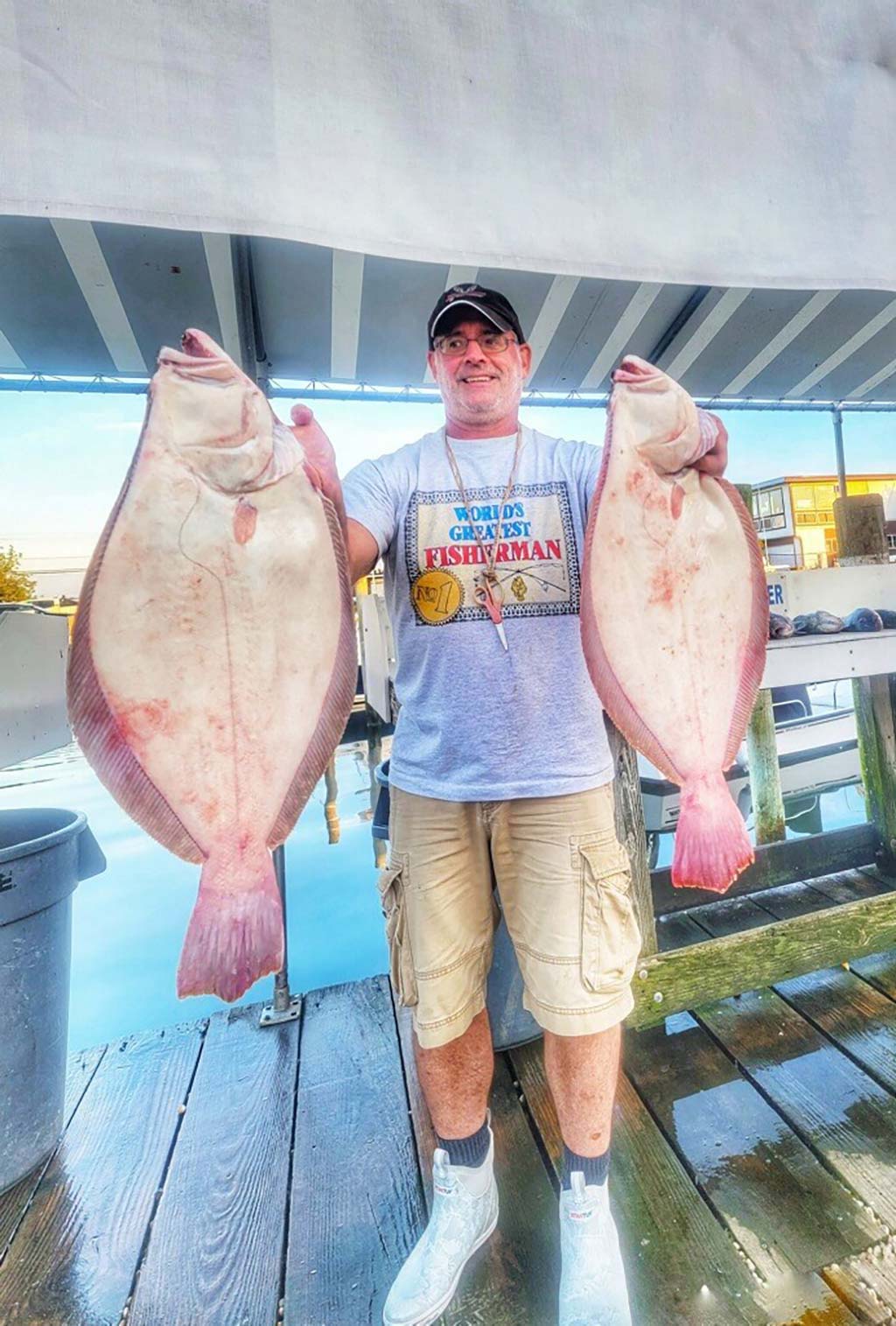
Ideal Drift Is Paramount
Drifting is an essential piece of the big fall fluke equation. A drift of 1 to 1-1/2 knots is ideal in deep water since this speed will keep the fluke aggressively chasing down your bait while minimizing the activities of undesirables such as skates and dogfish. Drifting slower than a half knot often results in a burdensome pick of skates which can make for a frustrating time. One way to resolve that problem is by power drifting. Kicking the engine in and out of gear and keeping the boat at a knot, knot and a half will help keep the skates at bay.
A drift over two knots may be too fast, requiring additional weight to hold bottom and will result in short strikes, particularly in water deeper than 60 feet. A sea anchor is the solution to slow the drift down allowing the rig to stay on the bottom and give the fluke a shot at the bait. A sea-anchor is a triangular bag attached to a piece of anchor rope placed overboard where it fills with the water. It acts as a drogue and slows a fast-drifting boat right down. To determine what size sea anchor you should use depends on the size of the boat. Quite often when the fish are in depths of 60 feet or better and a fast drift requires 12 or 16 ounces to touch bottom, a sea anchor can reduce the amount of lead to 4 to 6 ounces. Try to hold of on those days when the wind will be blowing against the tide, it makes for tough drifts and picky catches. But fishing is fishing, so if it’s your only window of time to get out there, go and make the best of it.
Tackle The Monter
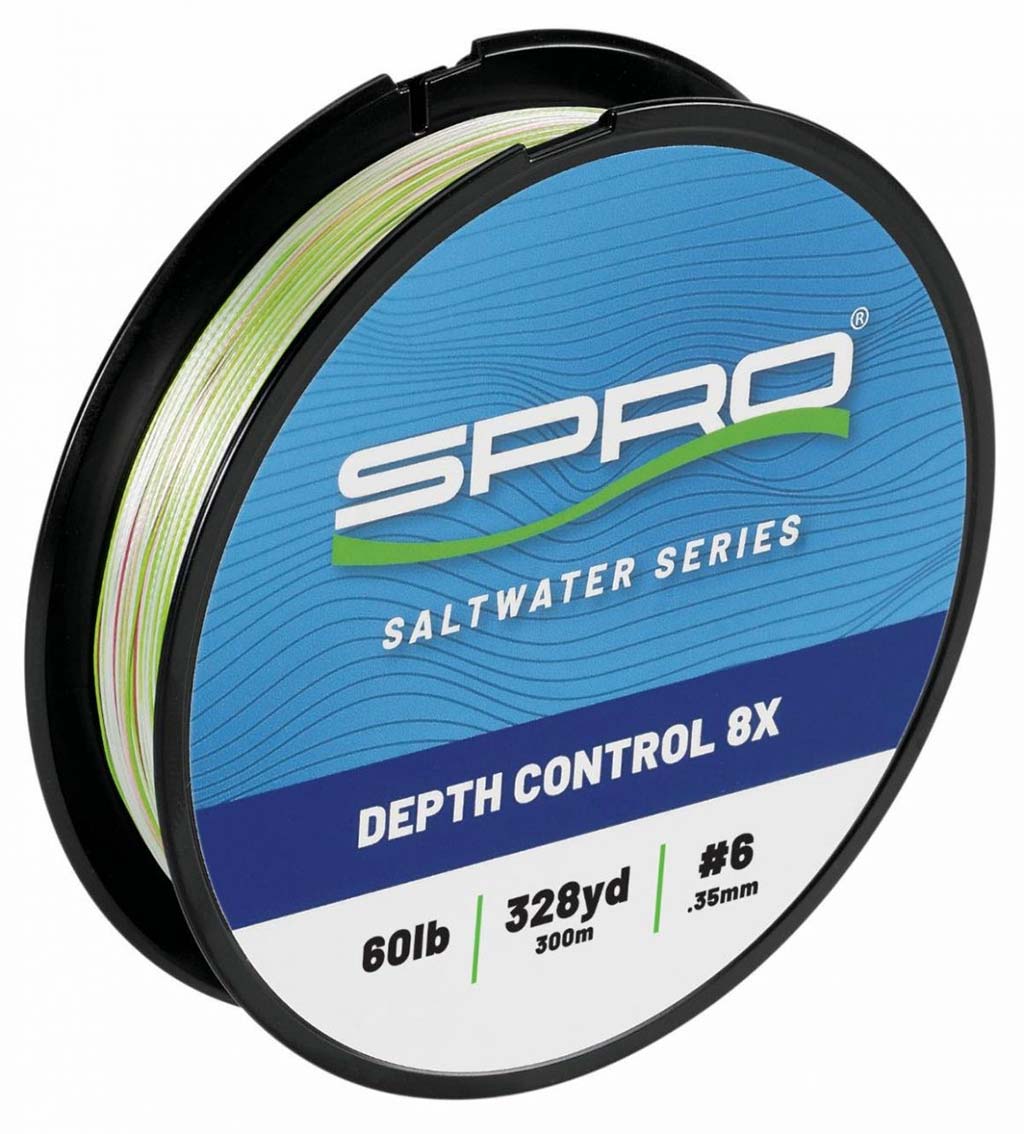
Baitcasters and conventional outfits in the 20-pound class are best suited for the job. You’ll appreciate a combo light enough not to cause fatigue from working the outfit all day, yet strong enough to manage the brutality of those hefty sea planks. An outfit I rely on is the 7-foot foot Lamiglas TFX7020CT Tri Flex Series, which is constructed of graphite and fiberglass, giving me the sensitivity and power I need to make even the broadest of fluke fight a fair game. I match the rod perfectly with an Abu Garcia Ambassador 7000I conventional reel with the power and speed at a 6:1 ratio to get the flatties off the bottom. Spro’s all new Saltwater Series 20-pound test, 8X Braid completes the combo as this form of braided synthetic is undoubtedly one of the smoothest, strongest and most sensitive available.
No matter your arsenal, an 8- to 10-foot shock leader preferably fluorocarbon of 20 or 30 pounds tied to the main line via an Albright knot will protect your braid in the rocks. Spro’s all new RT Leaders in the 20-pound class is fine for the task at hand. The old and reliable improved clinch knot will complete the terminal end if you decide to use a jig or a three-way swivel for plain jane rigs.
Choose Your Ammo
What can you say about the choices of fluke rigs, jigs and baits these days? The choices are mind boggling and all of them will work at one time or another. The key is to know what is best depending on location and conditions. Fluke rigs can be as simple as a plain hook and sinker, or complicated rigs with dropper loops and three-way swivels with multiple baits deployed on one rig. Not surprisingly, double-digit flatties are taken every year on just a plain hook and sinker baited with a spearing and a strip of squid. And though we veteran fluke hunters are aware of this fact, there’s something about fishing bucktails that adds zest to the game. Bucktails from 2 to 8 ounces have brought a good share of big fluke to the net for me over the years. The Spro Prime Bucktail tipped with a Gulp 6-inch Swimming Mullet has been the hot ticket. The scent of the Gulp is more relevant than the color; however, if it is a concern, Nuclear Chicken and Chartreuse are what I would suggest. As for the bucktail colors, glow, white, spearing blue and crazy chartreuse have all been consistent producers for me.
Play It Cool
Cunningness and cautiousness has played a big role in the survival of a bruiser fluke, and just like us, the older they get, the less aggressive they become. Therefore, be patient, never take the bait away from a fluke if you miss it on the first bite. The biggest mistake anglers make is taking major league swings, and then reeling up to see if any bait remains. This is a no-no. Instead, keep the bait down there for at least a minute or two longer. Big fluke will follow bait a long time before committing to it. You have to give them a chance.
Every fluke angler I know dreams of catching that once-in-a-lifetime doormat. If there are no major storms, history will once again repeat itself as it does each September. The window of opportunity is short; but, rest assured there are monster flatties traveling through the waters of Montauk. Don’t forget that Fisherman subscribers could earn themselves a chance to win a brand new boat from Steiger Craft by entering a Montauk ‘mat into the Dreamboat Challenge, need I say more?

